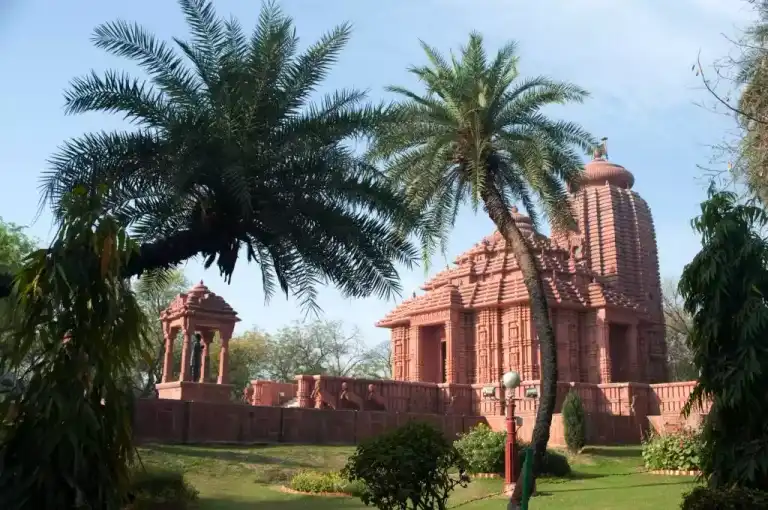Exploring Sagar District: A Comprehensive Guide
Introduction to Sagar District
Sagar District, nestled in the heart of Madhya Pradesh, India, is a region rich in history, culture, and natural beauty. Known for its vibrant heritage and dynamic landscapes, Sagar offers a unique blend of tradition and modernity. This comprehensive guide delves into the various facets of Sagar District, providing an in-depth look at its demography, culture, geography, cuisines, history, notable figures, and administration.
Demography of Sagar District
Population and Diversity
Sagar District, with a population of approximately 2.37 million people, is a melting pot of various ethnicities and communities. The district boasts a diverse demographic profile, with a harmonious mix of Hindus, Muslims, Jains, and Christians. This diversity is reflected in the district's cultural festivals, languages, and traditions.
Language and Education
Hindi is the predominant language spoken in Sagar, with Bundeli dialects also widely used. The district has a commendable literacy rate, with numerous educational institutions contributing to its academic landscape. Prominent schools and colleges, including Dr. Harisingh Gour University, play a crucial role in fostering education and research.
Cultural Heritage
Festivals and Traditions
Sagar District is renowned for its vibrant cultural festivals and traditions. Major festivals like Diwali, Holi, Eid, and Christmas are celebrated with great enthusiasm, reflecting the district's inclusive spirit. Traditional music and dance forms, such as Bundeli folk music and the Rai dance, add to the cultural richness of the region.
Arts and Crafts
The district is also famous for its traditional arts and crafts. Local artisans produce exquisite pottery, weaving, and handloom products. The intricate designs and craftsmanship of these items are a testament to the region's rich cultural heritage.
Geographic Landscape
Location and Climate
Sagar District is located in the central part of Madhya Pradesh. It is characterized by a diverse topography that includes hills, plains, and water bodies. The district experiences a tropical climate, with hot summers, a monsoon season, and mild winters. The varied climate supports a rich biodiversity and lush vegetation.
Natural Attractions
The region is home to several natural attractions, including the picturesque Lakha Banjara Lake and the serene Rahatgarh Waterfalls. These sites not only offer scenic beauty but also serve as popular tourist destinations.
Culinary Delights
Traditional Cuisine
Sagar District offers a delightful culinary experience, with traditional dishes that are a blend of various regional flavors. Popular local delicacies include Bhutte ka Kees, Poha, Jalebi, and various Bundeli specialties. The use of fresh, locally sourced ingredients adds a unique taste to the cuisine.
Street Food Culture
The district's street food culture is equally vibrant, with bustling markets offering a variety of snacks and sweets. Samosas, kachoris, and chaats are some of the favorite street foods enjoyed by locals and visitors alike.
Historical Significance
Ancient Heritage
Sagar District has a rich historical background, dating back to ancient times. The region has been a significant center of power and culture, with numerous historical monuments and sites. The ancient forts, temples, and palaces in the district are a testament to its glorious past.
Colonial Era and Beyond
During the colonial era, Sagar played a crucial role in the administration and military operations of the British. Post-independence, the district has continued to evolve, balancing its historical legacy with modern development.
Notable Figures
Dr. Harisingh Gour
Dr. Harisingh Gour, a prominent lawyer, jurist, and educationist, is one of the most notable figures associated with Sagar District. He founded Dr. Harisingh Gour University, one of the oldest and most prestigious universities in Madhya Pradesh.
Other Influential Personalities
The district has also been home to several other influential personalities, including poets, writers, and social reformers, who have contributed significantly to the cultural and intellectual heritage of the region.
Administrative Structure
Governance
Sagar District is administered through a well-structured governance system. The district is divided into several tehsils and blocks, each managed by local government officials. The district administration is responsible for implementing state policies and ensuring the welfare of the residents.
Infrastructure and Development
In recent years, the district has seen significant infrastructure development. Improved road networks, healthcare facilities, and educational institutions have contributed to the overall growth and development of the region.
Diagram: Administrative Structure of Sagar District
Conclusion
Sagar District, with its rich history, diverse culture, and dynamic development, is a region of immense significance in Madhya Pradesh. Its unique blend of tradition and modernity, coupled with its natural beauty and historical landmarks, makes it a fascinating destination for residents and visitors alike. This comprehensive guide aims to provide a detailed overview of the various aspects that make Sagar District a remarkable region, worthy of recognition and exploration.
